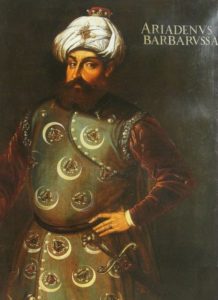Between the Nile and the Red Sea were living Bedouin tribes expelled from Arabia for their disruption and turbulent influence, both Banu Hilal and Banu Sulaym among others, whose presence disrupted farmers in the Nile Valley since the nomads would often loot. The then Fatimid vizier devised to relinquish control of the Maghreb and obtained the agreement of his sovereign. This not only prompted the Bedouins to leave, but the Fatimid treasury even gave them a light expatriation cash allowance.
Whole tribes set off with women, children, ancestors, animals and camping equipment. Some stopped on the way, especially in Cyrenaica, where they are still one of the essential elements of the settlement but most arrived in Ifriqiya by the Gabes region. The Zirid ruler tried to stop this rising tide, but each meeting, the last under the walls of Kairouan, his troops were defeated and Arabs remained masters of the field.
The flood was still rising, and in 1057 the Arabs spread on the high plains of Constantine where they gradually choked Qalaa of Banu Hammad, as they had done Kairouan few decades ago. From there they gradually gained the upper Algiers and Oran plains. Some were forcibly taken by the Almohads in the second half of the 12th century. We can say that in the 13th century there were in all of North Africa, with the exception of the main mountain ranges and certain coastal regions remained entirely Berber.
Ottoman Era:
The region of Algeria was partially ruled by Ottomans for three centuries from 1516 to 1830. In 1516 the Turkish privateer brothers Aruj and Hayreddin Barbarossa, who operated successfully under the Hafsids, moved their base of operations to Algiers. They succeeded in conquering Jijel and Algiers from the Spaniards but eventually assumed control over the city and the surrounding region, forcing the previous ruler, Abu Hamo Musa III of the Bani Ziyad dynasty, to flee. When Aruj was killed in 1518 during his invasion of Tlemcen, Hayreddin succeeded him as military commander of Algiers. The Ottoman sultan gave him the title of beylerbey and a contingent of some 2,000 janissaries. With the aid of this force, Hayreddin conquered the whole area between Constantine and Oran (although the city of Oran remained in Spanish hands until 1791).

The next beylerbey was Hayreddin’s son Hasan, who assumed the position in 1544. Until 1587 the area was governed by officers who served terms with no fixed limits. Subsequently, with the institution of a regular Ottoman administration, governors with the title of pasha ruled for three-year terms. The pasha was assisted by janissaries, known in Algeria as the ojaq and led by an agha. Discontent among the ojaq rose in the mid-1600s because they were not paid regularly, and they repeatedly revolted against the pasha. As a result, the agha charged the pasha with corruption and incompetence and seized power in 1659.
In 1671, the taifa rebelled, killed the agha, and placed one of its own in power. The new leader received the title of dey. After 1689, the right to select the dey passed to the divan, a council of some sixty nobles. It was at first dominated by the ojaq; but by the 18th century, it had become the dey’s instrument. In 1710, the dey persuaded the sultan to recognise him and his successors as regent, replacing the pasha in that role, although Algiers remained a part of the Ottoman Empire.
